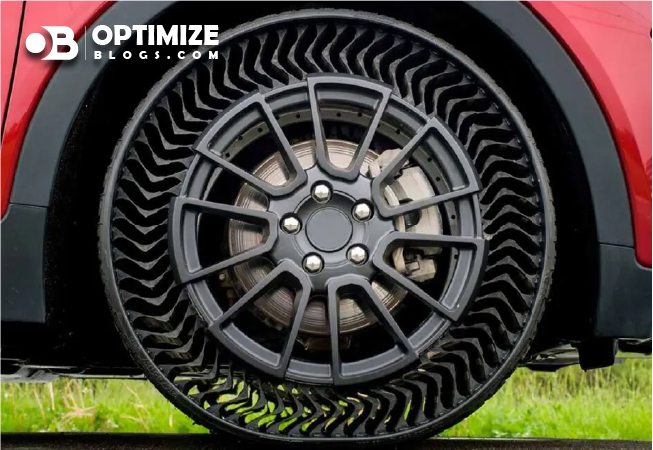
When it comes to your vehicle's performance and safety, few components are as crucial as the tires. The tires you choose can significantly impact your driving experience, handling, fuel efficiency, and overall safety on the road. With a multitude of tire options available, selecting the right ones for your vehicle can be a daunting task. In this comprehensive guide, we'll walk you through the key factors to consider when choosing the right tires, ensuring that you make an informed decision that matches your driving needs and conditions.
Understand Your Vehicle and Its Requirements
The first step in choosing the right tires is to understand your vehicle and its specific requirements. Different vehicles have different tire needs based on factors like:
Vehicle Type: Is your vehicle a passenger car, SUV, truck, or sports car? Each type may require different tire specifications.
Size: Check your vehicle's owner's manual or the placard on the driver's side door jamb for the recommended tire size.
Performance Needs: Consider your driving habits. Are you primarily driving in the city, on the highway, or off-road? Do you need tires that offer high-speed performance or those designed for rugged terrain?
Understanding these factors will help you narrow down your tire options and ensure that the tires you choose are compatible with your vehicle.
Tire Types: All-Season, Summer, Winter, and Specialty Tires
Tires are designed for specific seasons and conditions, so it's essential to select the right type for your climate and driving needs.
All-Season Tires: These tires are versatile and can handle a variety of weather conditions, making them a popular choice for many drivers. They provide adequate traction in both wet and dry conditions and moderate performance in light snow.
Summer Tires: Designed for warm weather and dry road conditions, summer tires offer superior grip and handling. However, they perform poorly in cold temperatures and winter conditions.
Winter Tires: Winter tires are optimized for cold weather, ice, and snow. They provide excellent traction and braking in winter conditions but wear out quickly in warmer weather, so it's essential to switch to all-season or summer tires when the weather warms up.
Specialty Tires: Depending on your needs, you might require specialty tires, such as performance tires for sports cars, off-road tires for trucks and SUVs, or run-flat tires that allow you to continue driving even after a puncture.
Tread Pattern and Depth
The tread pattern and depth of your tires play a significant role in their performance. Tread patterns vary, and each design is suitable for specific road conditions:
Symmetrical Treads: These have the same pattern on both sides and offer good all-around performance, making them suitable for all-season tires.
Asymmetrical Treads: Asymmetrical tires have different patterns on the inside and outside, optimizing performance in various conditions. They are often used in high-performance or sports cars.
Directional Treads: These tires have a specific tread pattern that is optimized for water evacuation, making them excellent for wet conditions. They should be installed in a specific direction, as indicated on the sidewall.
Winter Treads: Winter tires have deep, aggressive tread patterns with sipes (small grooves) to provide traction in snow and ice.
Ensure that the tread depth meets legal requirements and consider replacing tires that are excessively worn to maintain safety and performance.
Load Index and Speed Rating
Every tire has a load index and a speed rating, which indicate the maximum load capacity and speed capability of the tire. Refer to your vehicle's specifications to ensure you select tires that meet the load index and speed rating requirements. These ratings are essential for safety and performance, as exceeding them can lead to tire failure or reduced handling capabilities.
Budget Considerations
While it's tempting to opt for the most affordable tires, consider them as an investment in your safety and vehicle performance. High-quality tires often come with a higher price tag but offer better durability, performance, and safety. Weigh your budget constraints against the benefits of superior tires, as they can provide a more comfortable and secure driving experience.
Maintenance and Care
Once you've chosen the right tires for your vehicle, it's essential to maintain and care for them properly:
Regularly Check Tire Pressure: Maintain the recommended tire pressure to ensure even wear and optimal performance. Underinflated or overinflated tires can lead to reduced fuel efficiency and increased risk of blowouts.
Rotate Tires: Regularly rotate your tires to promote even wear and extend their lifespan. Refer to your vehicle's owner's manual for the recommended rotation schedule.
Alignment and Balancing: Proper alignment and balancing ensure even tire wear and optimal handling. If you notice uneven wear or your vehicle pulls to one side, it may be time for an alignment check.
Inspect Tread Depth: Periodically check the tread depth to ensure it meets legal requirements and provides adequate traction.
Replace Worn Tires: When your tires reach the end of their usable life or exhibit signs of significant wear, replace them promptly to maintain safety and performance.
Conclusion
Choosing the right tires for your vehicle is a crucial decision that affects your safety, driving experience, and vehicle performance. By understanding your vehicle's requirements, selecting the appropriate tire type, considering tread patterns, load index, and speed rating, and factoring in budget considerations, you can make an informed choice that enhances your driving experience and ensures the longevity of your tires. Remember that regular maintenance and care are essential to maximize the lifespan and performance of your chosen tires, so make tire maintenance a routine part of your vehicle upkeep.





